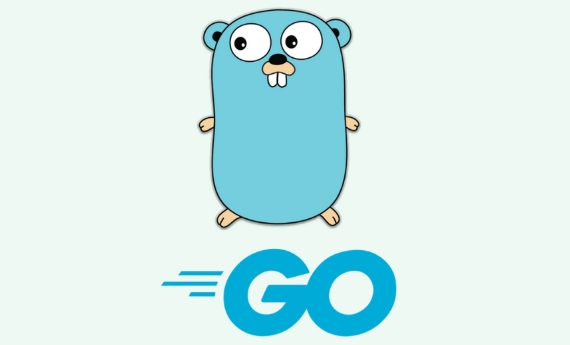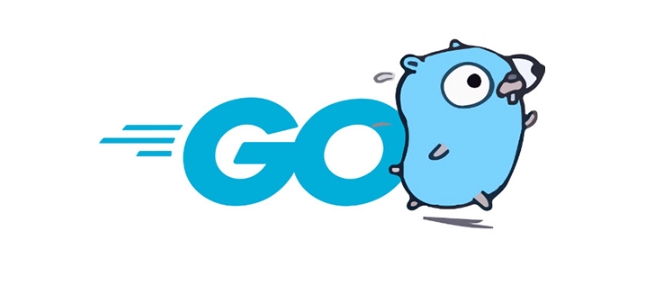Is Go object-oriented?
Yes, Go supports object-oriented programming, but with a minimalistic approach different from traditional languages like Java or Python. 1. Go uses structs as data holders and attaches methods to them, enabling bundling of data and behavior. 2. Instead of inheritance, Go employs composition through embedding, allowing reuse of fields and methods without tight coupling. 3. Polymorphism is achieved via interfaces, where types implicitly satisfy interfaces by matching method signatures, supporting flexibility and decoupling. Together, these features provide OOP capabilities in a simple, clear manner.

Yes, Go supports object-oriented programming (OOP), but it does so in a way that’s different from languages like Java or Python. If you're coming from a traditional OOP background, you might find Go’s approach a bit minimalistic — but that’s by design.

Structs and Methods: The Building Blocks
In Go, the closest thing to an object is a struct. A struct can hold data (like properties) and methods can be attached to it. This gives you a way to bundle data and behavior together, which is one of the core ideas in OOP.
For example:

type Rectangle struct {
Width, Height float64
}
func (r Rectangle) Area() float64 {
return r.Width * r.Height
}Here, Rectangle is a struct type, and Area() is a method associated with it. This looks and behaves similarly to classes and methods in other languages, just without inheritance or constructors.
- You define a struct to represent your data.
- You attach functions to it using method syntax.
- There's no
classkeyword, but the pattern is familiar.
Go keeps this part simple and avoids adding extra syntax or magic behind the scenes.

No Inheritance, But Composition Works Well
One big difference is that Go doesn’t support classical inheritance. That means you can't say "this type is a subtype of another type." Instead, Go encourages composition — building types out of smaller parts.
For instance:
type Animal struct {
Name string
}
func (a Animal) Speak() {
fmt.Println("...")
}
type Dog struct {
Animal // embedded field
Breed string
}By embedding Animal inside Dog, you get its fields and methods “promoted” to Dog. So you can do things like myDog.Speak() directly.
This style promotes reusability without tight coupling. It also avoids the complexity and confusion that multiple inheritance can bring.
- Embed types to reuse behavior
- Promoted methods work like inherited ones
- You avoid rigid hierarchies and keep flexibility
It’s not classic OOP, but it still feels familiar and often leads to cleaner designs.
Interfaces Enable Polymorphism
Polymorphism in Go works through interfaces. An interface defines a set of methods, and any type that implements those methods automatically satisfies the interface.
A common example:
type Shape interface {
Area() float64
}Now both Rectangle and a Circle type can implement Shape without being explicitly declared as subtypes.
This is known as duck typing — if it walks like a duck and quacks like a duck, it is a duck.
- You don’t need to declare that a type implements an interface
- Just match the method signature
- This makes code more flexible and decoupled
So while Go doesn’t have the usual implements keyword, the system still supports powerful abstractions.
Object-oriented programming in Go isn't about fitting into a textbook definition — it's about getting the job done with simplicity and clarity. You'll find that structs, methods, embedding, and interfaces cover most of what you'd want from OOP, just in a slightly different way.
基本上就这些。
The above is the detailed content of Is Go object-oriented?. For more information, please follow other related articles on the PHP Chinese website!

Hot AI Tools

Undress AI Tool
Undress images for free

Undresser.AI Undress
AI-powered app for creating realistic nude photos

AI Clothes Remover
Online AI tool for removing clothes from photos.

Clothoff.io
AI clothes remover

Video Face Swap
Swap faces in any video effortlessly with our completely free AI face swap tool!

Hot Article

Hot Tools

Notepad++7.3.1
Easy-to-use and free code editor

SublimeText3 Chinese version
Chinese version, very easy to use

Zend Studio 13.0.1
Powerful PHP integrated development environment

Dreamweaver CS6
Visual web development tools

SublimeText3 Mac version
God-level code editing software (SublimeText3)
 How to build a web server in Go
Jul 15, 2025 am 03:05 AM
How to build a web server in Go
Jul 15, 2025 am 03:05 AM
It is not difficult to build a web server written in Go. The core lies in using the net/http package to implement basic services. 1. Use net/http to start the simplest server: register processing functions and listen to ports through a few lines of code; 2. Routing management: Use ServeMux to organize multiple interface paths for easy structured management; 3. Common practices: group routing by functional modules, and use third-party libraries to support complex matching; 4. Static file service: provide HTML, CSS and JS files through http.FileServer; 5. Performance and security: enable HTTPS, limit the size of the request body, and set timeout to improve security and performance. After mastering these key points, it will be easier to expand functionality.
 Go for Audio/Video Processing
Jul 20, 2025 am 04:14 AM
Go for Audio/Video Processing
Jul 20, 2025 am 04:14 AM
The core of audio and video processing lies in understanding the basic process and optimization methods. 1. The basic process includes acquisition, encoding, transmission, decoding and playback, and each link has technical difficulties; 2. Common problems such as audio and video aberration, lag delay, sound noise, blurred picture, etc. can be solved through synchronous adjustment, coding optimization, noise reduction module, parameter adjustment, etc.; 3. It is recommended to use FFmpeg, OpenCV, WebRTC, GStreamer and other tools to achieve functions; 4. In terms of performance management, we should pay attention to hardware acceleration, reasonable setting of resolution frame rates, control concurrency and memory leakage problems. Mastering these key points will help improve development efficiency and user experience.
 Go select with default case
Jul 14, 2025 am 02:54 AM
Go select with default case
Jul 14, 2025 am 02:54 AM
The purpose of select plus default is to allow select to perform default behavior when no other branches are ready to avoid program blocking. 1. When receiving data from the channel without blocking, if the channel is empty, it will directly enter the default branch; 2. In combination with time. After or ticker, try to send data regularly. If the channel is full, it will not block and skip; 3. Prevent deadlocks, avoid program stuck when uncertain whether the channel is closed; when using it, please note that the default branch will be executed immediately and cannot be abused, and default and case are mutually exclusive and will not be executed at the same time.
 Developing Kubernetes Operators in Go
Jul 25, 2025 am 02:38 AM
Developing Kubernetes Operators in Go
Jul 25, 2025 am 02:38 AM
The most efficient way to write a KubernetesOperator is to use Go to combine Kubebuilder and controller-runtime. 1. Understand the Operator pattern: define custom resources through CRD, write a controller to listen for resource changes and perform reconciliation loops to maintain the expected state. 2. Use Kubebuilder to initialize the project and create APIs to automatically generate CRDs, controllers and configuration files. 3. Define the Spec and Status structure of CRD in api/v1/myapp_types.go, and run makemanifests to generate CRDYAML. 4. Reconcil in the controller
 Go REST API example
Jul 14, 2025 am 03:01 AM
Go REST API example
Jul 14, 2025 am 03:01 AM
How to quickly implement a RESTAPI example written in Go? The answer is to use the net/http standard library, which can be completed in accordance with the following three steps: 1. Set up the project structure and initialize the module; 2. Define the data structure and processing functions, including obtaining all data, obtaining single data based on the ID, and creating new data; 3. Register the route in the main function and start the server. The entire process does not require a third-party library. The basic RESTAPI function can be realized through the standard library and can be tested through the browser or Postman.
 How to make an HTTP request in Go
Jul 14, 2025 am 02:48 AM
How to make an HTTP request in Go
Jul 14, 2025 am 02:48 AM
The methods of initiating HTTP requests in Go are as follows: 1. Use http.Get() to initiate the simplest GET request, remember to handle the error and close the Body; 2. Use http.Post() or http.NewRequest() to send a POST request, and you can set JSON data or form data; 3. Set timeout, header and cookies, control Timeout and Header.Set to add custom headers through Client, and use CookieJar to automatically manage cookies; 4. Notes include having to close Body, non-req object, and setting User-Ag
 Go Query Optimization Techniques for PostgreSQL/MySQL
Jul 19, 2025 am 03:56 AM
Go Query Optimization Techniques for PostgreSQL/MySQL
Jul 19, 2025 am 03:56 AM
TooptimizeGoapplicationsinteractingwithPostgreSQLorMySQL,focusonindexing,selectivequeries,connectionhandling,caching,andORMefficiency.1)Useproperindexing—identifyfrequentlyqueriedcolumns,addindexesselectively,andusecompositeindexesformulti-columnquer
 Go defer statement explained
Jul 14, 2025 am 02:57 AM
Go defer statement explained
Jul 14, 2025 am 02:57 AM
The core function of defer is to postpone the execution of function calls until the current function returns, which is often used for resource cleaning. Specifically, it includes: 1. Ensure that files, network connections, locks and other resources are released in a timely manner; 2. The execution order is later-in-first-out (LIFO), and the last defined defer is executed first; 3. The parameters are determined when defer is defined, and evaluated during non-execution. If variable changes are needed, closures or pointers can be used; 4. Avoid abuse of defer in loops and prevent resource accumulation from being released in a timely manner.







